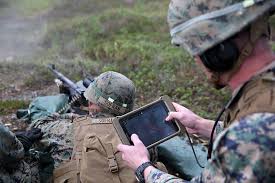Source: i-hls.com
Situational awareness and battlefield intelligence is often the most crucial part of warfare. Aircraft carriers, jets, tanks, and the most advanced technologies mean close to nothing if lacking solid intelligence and enemy detection capabilities.
The United States Army is now planning to utilize artificial intelligence, machine learning, target recognition, and drones to predict where an enemy attack will likely take place.
The Aided Threat Recognition from Mobile Cooperative and Autonomous Sensors (ATR-MCAS) program intends to operate autonomous ground and air robots over the battlefield to keep a continuous watch on the enemy. The autonomous robots will then identify the enemy’s weapon systems and pass on the findings to be processed by artificial intelligence. The AI will then create a “common operating picture” (COP) of the battlefield, based on the findings.
Situational awareness is crucial in warfare. Fighting forces out in the field may lose situational awareness during or immediately after combat, disorienting soldiers and wasting valuable time. However with a COP of the battlefield, soldiers can take a quick look at the COP and immediately regain their battlefield intelligence and situational awareness.
The COP data is also processed by AI to enable a decision support agent, which can make recommendations to soldiers regarding the prioritization of enemy threats to target. For example, if the system picks up that there are four enemy tanks on road towards U.S. troops, and on another road there are only two enemy tanks, the system may recommend the troops to target the tanks first as it is the bigger threat at the moment.
ATR-MCAS will never replace a human intelligence officer, however it can help humans quickly analyze and prioritize information in a convenient and practical order. Popularmechanics.com reports that the AI can help minimize information overloads for intelligence officers by quickly scanning hundreds of enemy equipment, troops, vehicles, and weapons, thus ensuring that intelligence officers, commanders, and troops are best prepared for combat from a situational awareness and intelligence standpoint.
Such systems save crucial time for soldiers and officers alike, granting them the capability to quickly analyze the battlefield and make educated assumptions regarding the enemy.


